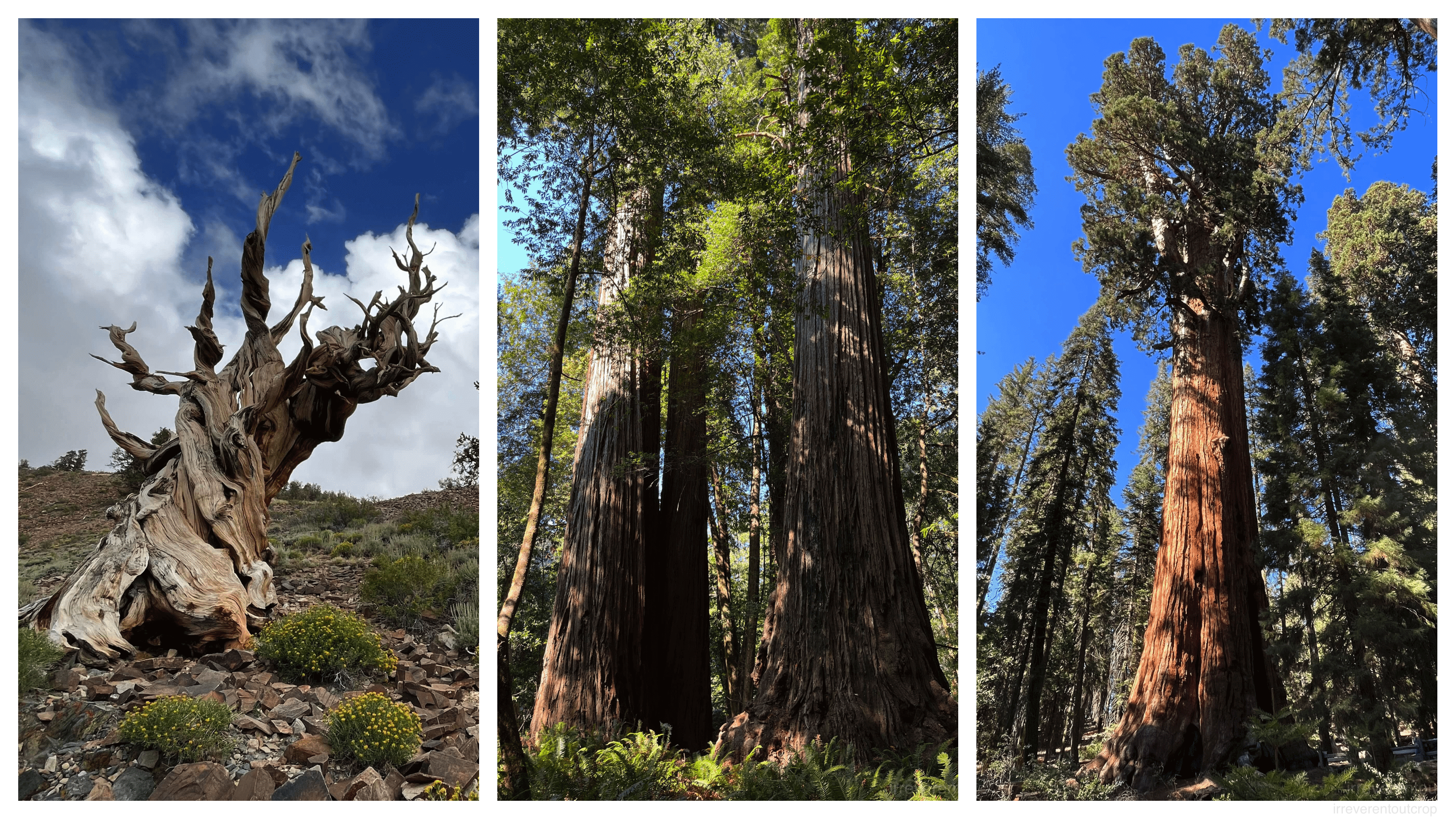California.
The oldest, tallest, and largest (by volume) known living trees on Earth are all around the Sierra Nevada Mountains in California. Each of them is worth a separate visit.
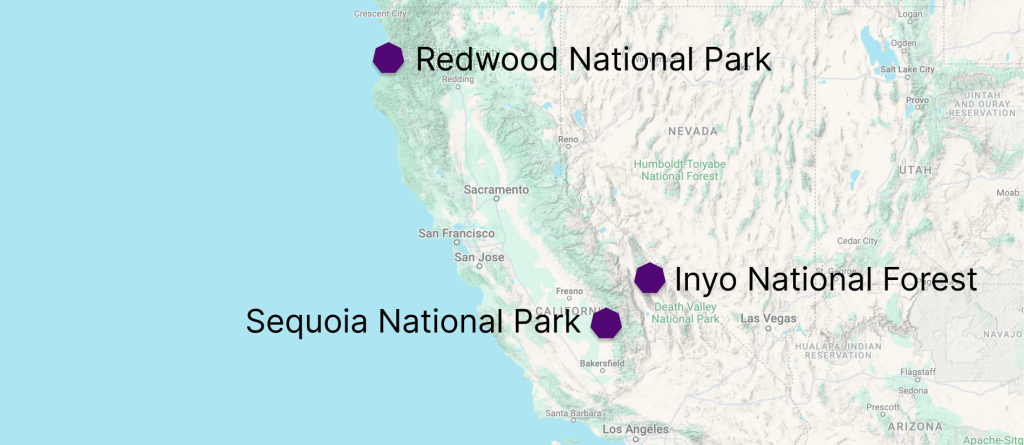
The oldest trees – bristlecone pines
An ongoing research project is investigating a cypress tree in Alerce Costero National Park in Chile that might be around 5,500 years old. However, until this is fully confirmed, it is generally accepted that the oldest known tree in the world is a 4,800-year-old bristlecone pine named “Methuselah,” located in the Ancient Bristlecone Pine Forest (part of Inyo National Forest) in California’s White Mountains.
The bristlecone pine belongs to the pine family (Pinaceae) and is found only in the desert regions from inland California to Nevada and Utah. On our way from Southern California to Mammoth Lakes, we took a detour to visit one of their homes – the White Mountains.
The name “White Mountains” may not sound particularly special, but upon arrival, it was indeed average-looking. Located east of the towering Sierra Nevada, the White Mountains receive little moisture, resulting in a stark, barren landscape.
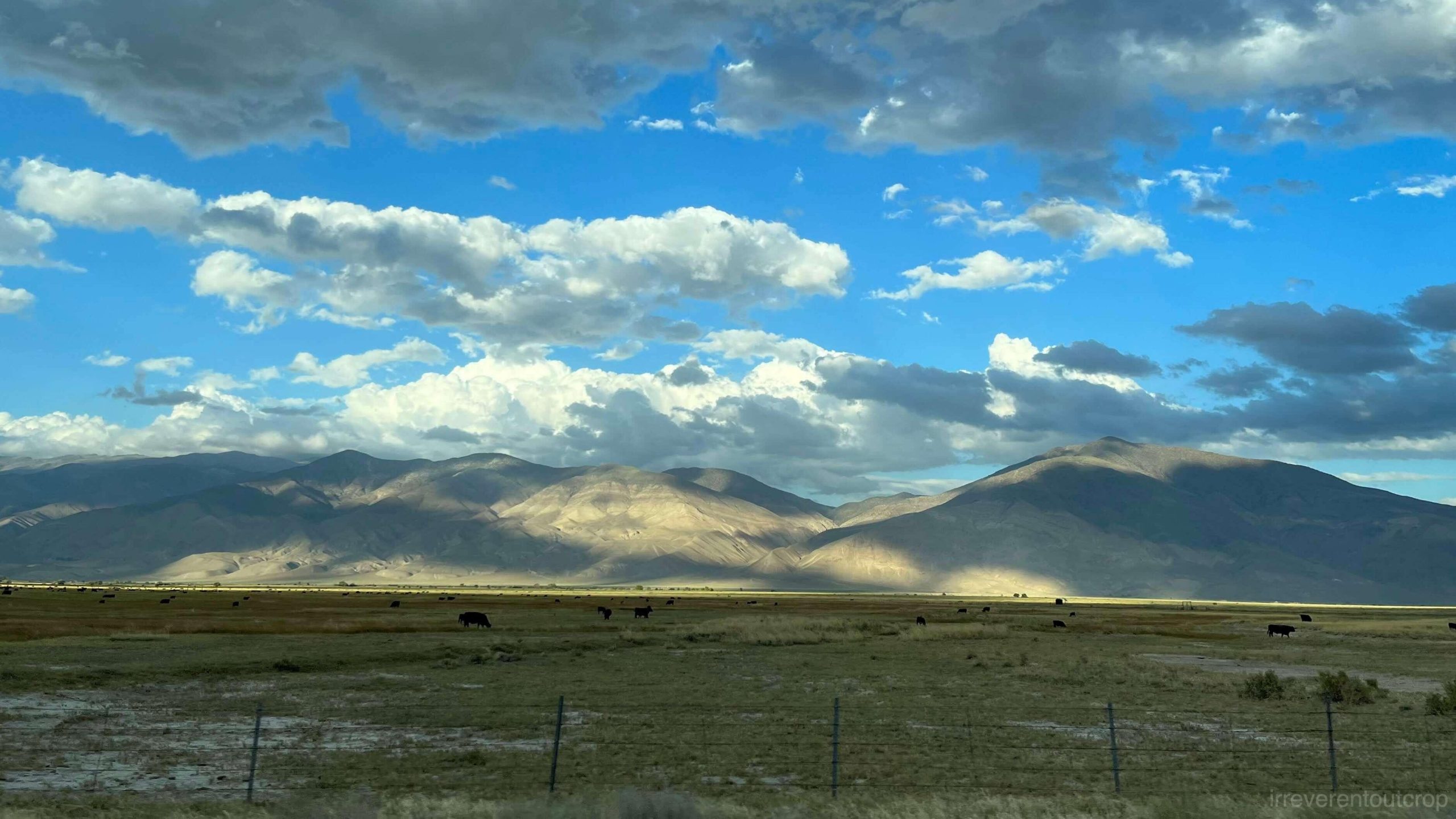
We arrived at the mountain and had to walk a bit from where we parked to see the ancient trees on the mountain.
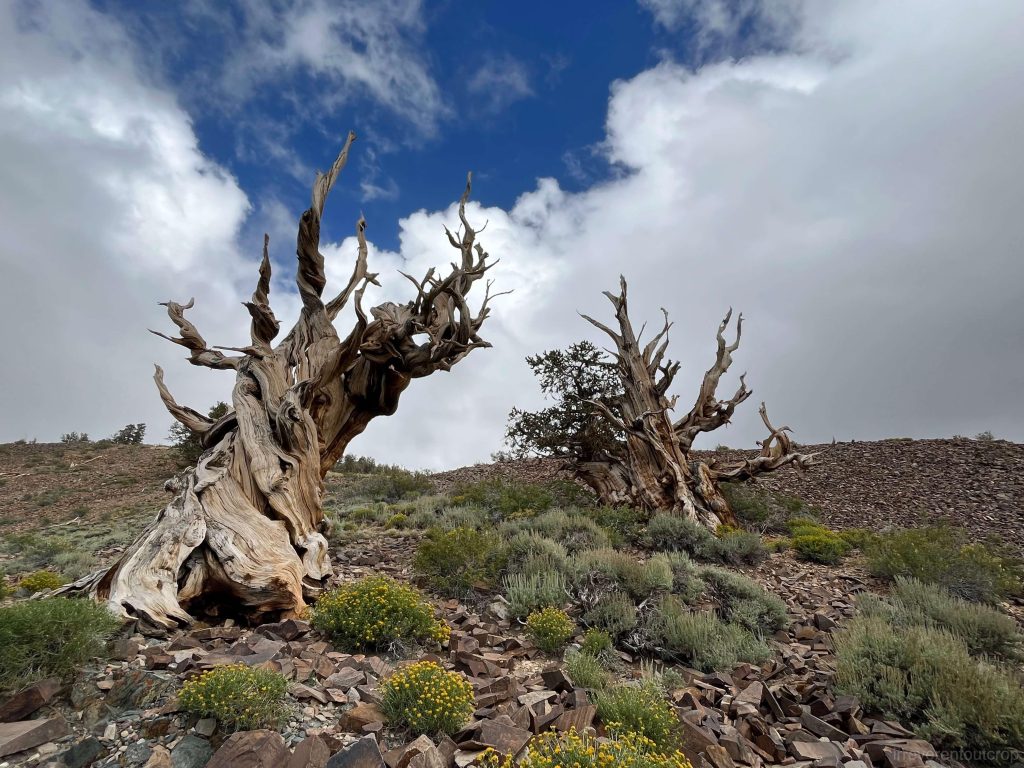
Due to conservation reasons, the forest management does not specify which exact tree is Methuselah, the 4,800-year-old bristlecone pine. They only indicate it’s in this area, because back in 1964, an unfortunate logging incident due to lax protection and oversight resulted in the cutting down of a bristlecone pine labeled WPN-114 by a student named Donald Rusk Currey. It was only after felling that they realized its age of 5,000 years, making it the oldest in the world.
While we don’t know exactly which tree is 4,800 years old, many of these bristlecone pines in this area generally exceed 4,000 years old. This means these trees were already here on this mountain when Yu the Great was controlling floods, the pyramids were being built, and Hammurabi hadn’t yet been born.
The more twisted and “half-dead” they appear, the older they are.
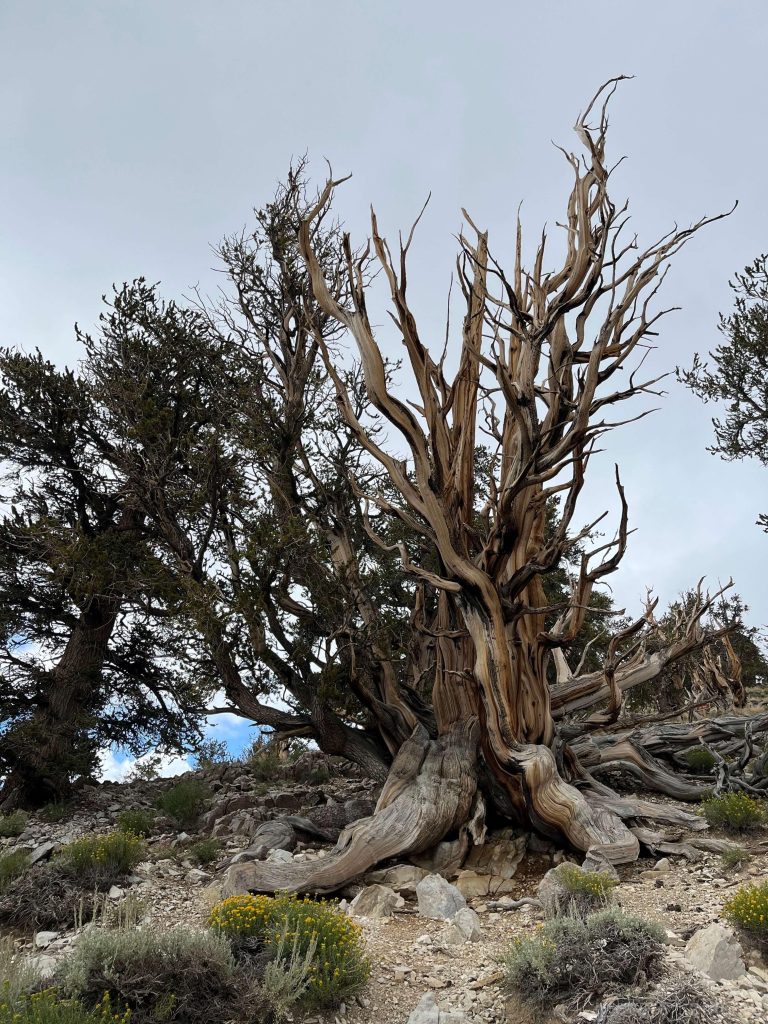

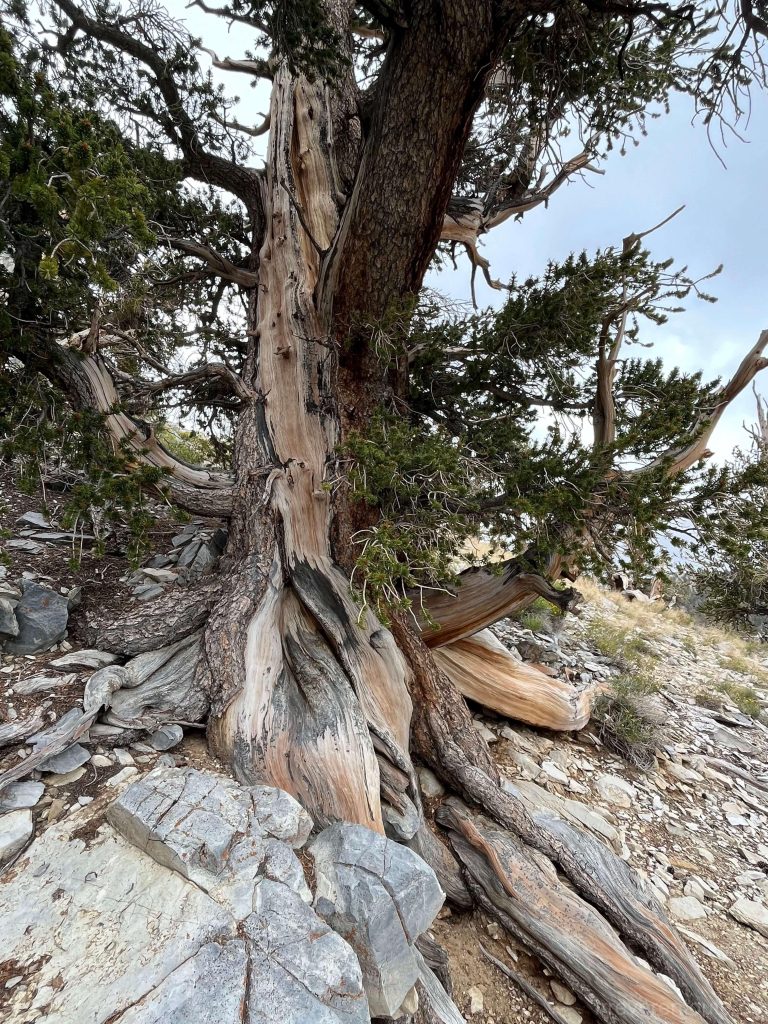
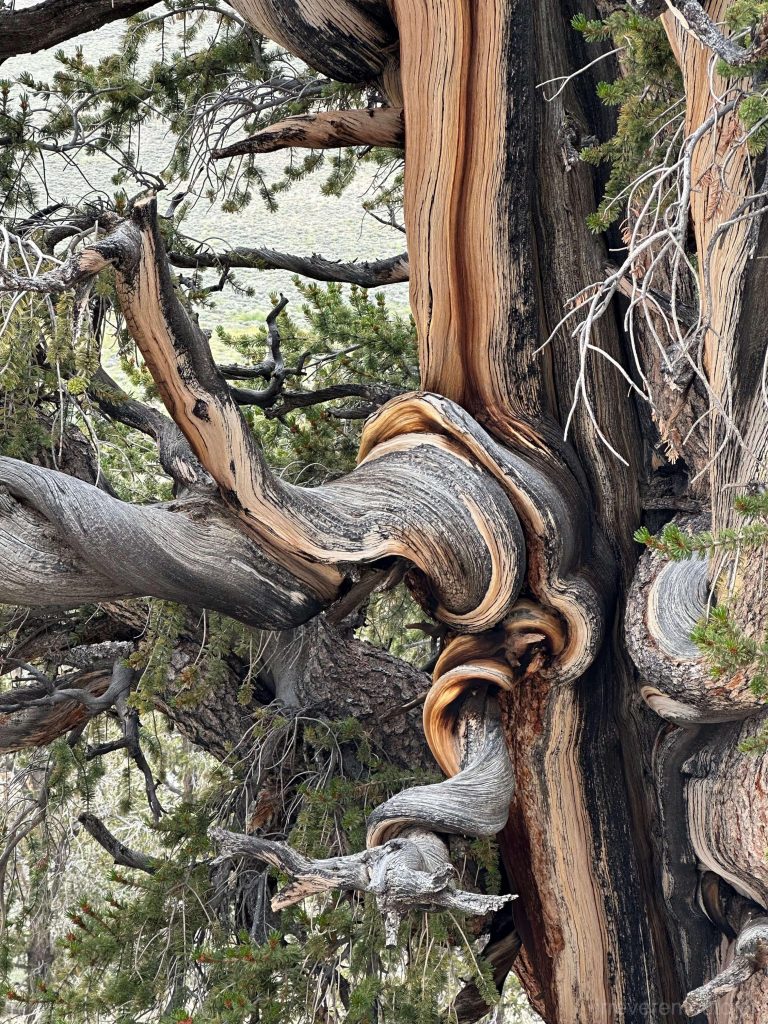
Despite their age, these pine trees still have robust reproductive capabilities, with most of them bearing cones. The immature cones are purple, while the mature ones turn orange, creating an interesting visual contrast with the green needles.
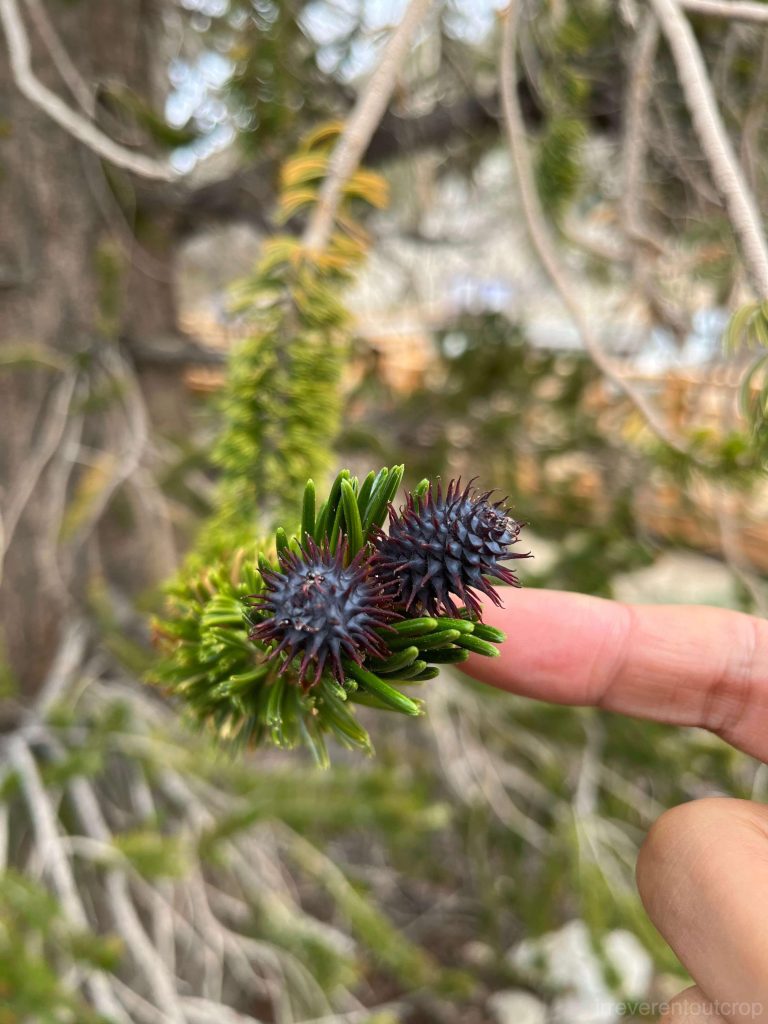
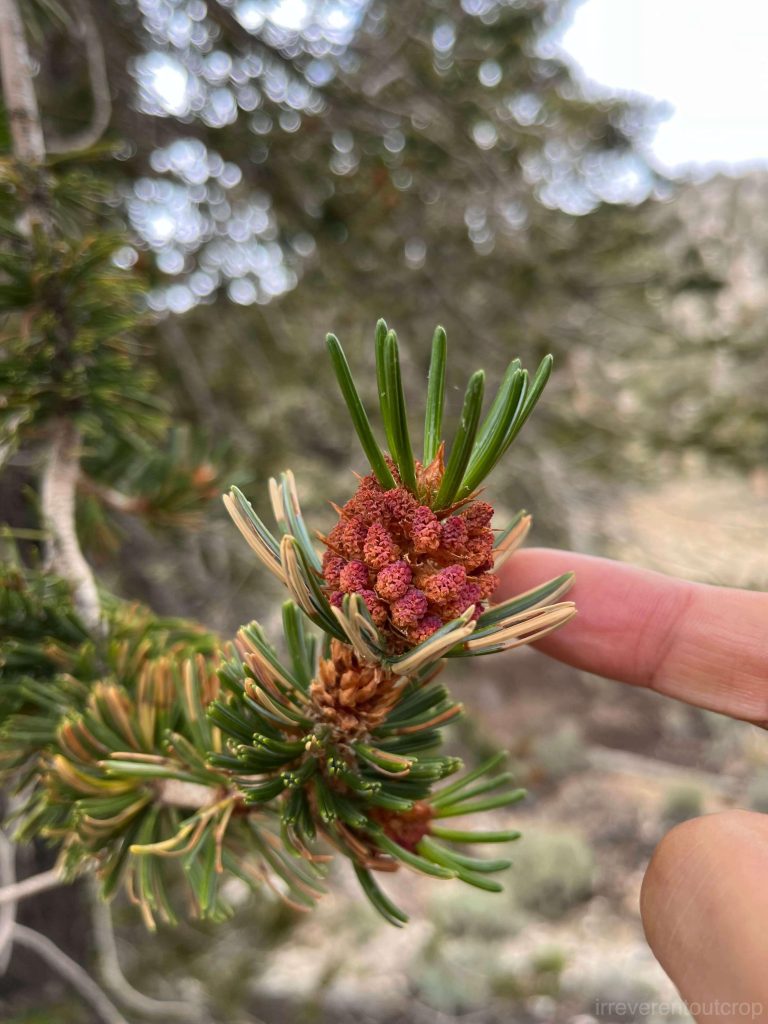
Some of the Bristlecone Pines have fallen, yet their wood remains remarkably well-preserved and resistant to decay.

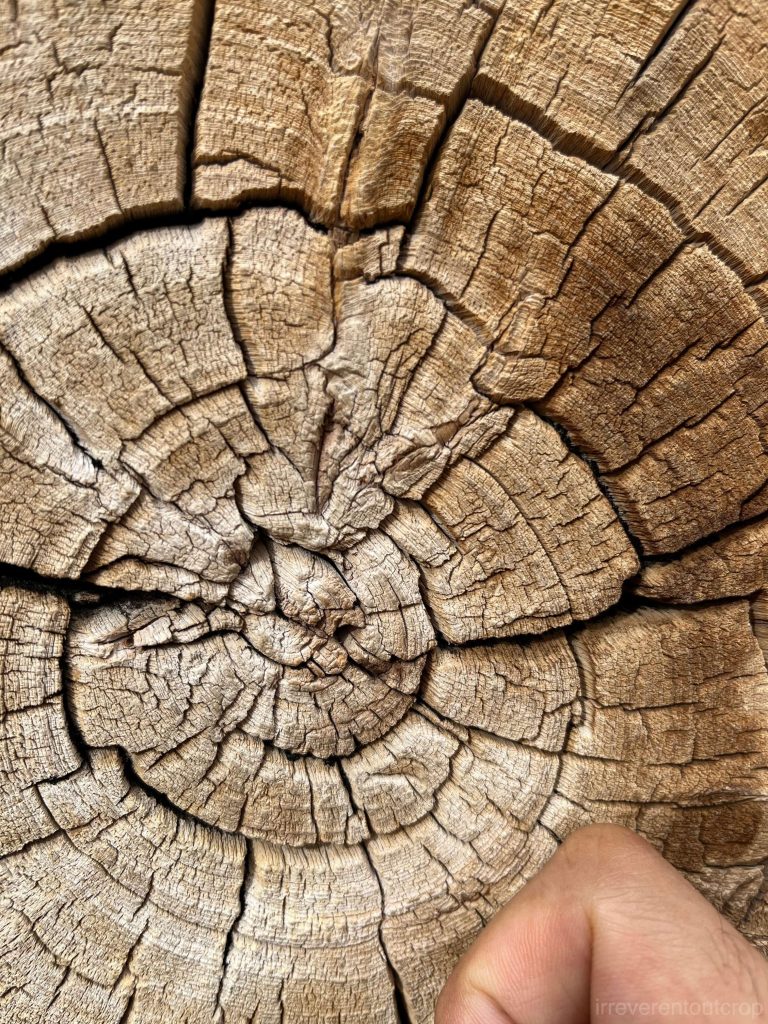
irreverentoutcrop.com
Both up close and from afar, the wood grain patterns of these trees are incredibly beautiful, with distinct and well-defined layers.

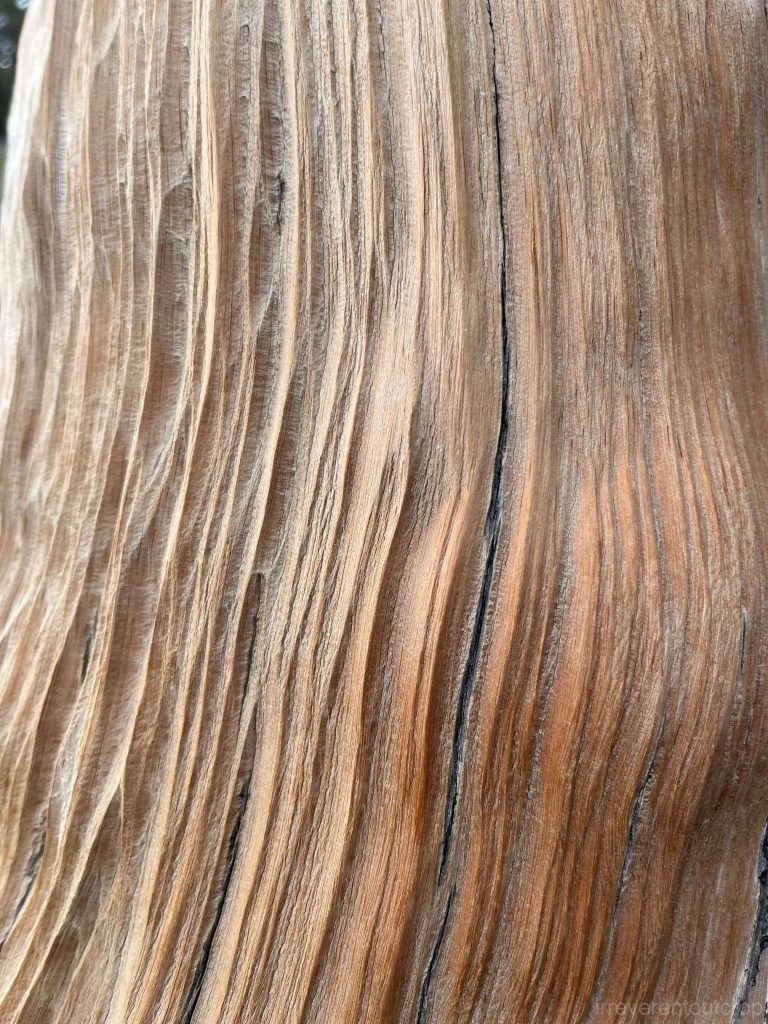
The bristlecone pines grow extremely slowly due to harsh, windy conditions year-round and the poor soil of the dolomite rock formations. However, the advantage here is that once a tree survives, there is almost no competition.
To protect the oldest tree by “hiding” it among its friends, its exact location is kept confidential. Similarly, for the tallest tree in the world, only a general area is known; its specific identity remains undisclosed.
The tallest trees – coast redwoods
The tallest tree species in the world is the coast redwood, a member of the cypress family (Cupressaceae) in the subfamily Sequoioideae. The tallest known individual tree, named “Hyperion,” stands at 116 meters / 380 feet tall and is located in Redwood National Park along the northern coast of California.
We first flew to Redding and then headed west into the mountains. Along the way, near the town of Weaverville, we were pleasantly surprised to discover a historically significant Chinese temple called the Joss House (or the “Temple of the Forest Beneath Clouds” 云林庙 – in Chinese). This is the oldest continuously used Chinese temple in the whole Americas, and likely in the entire Western Hemisphere.
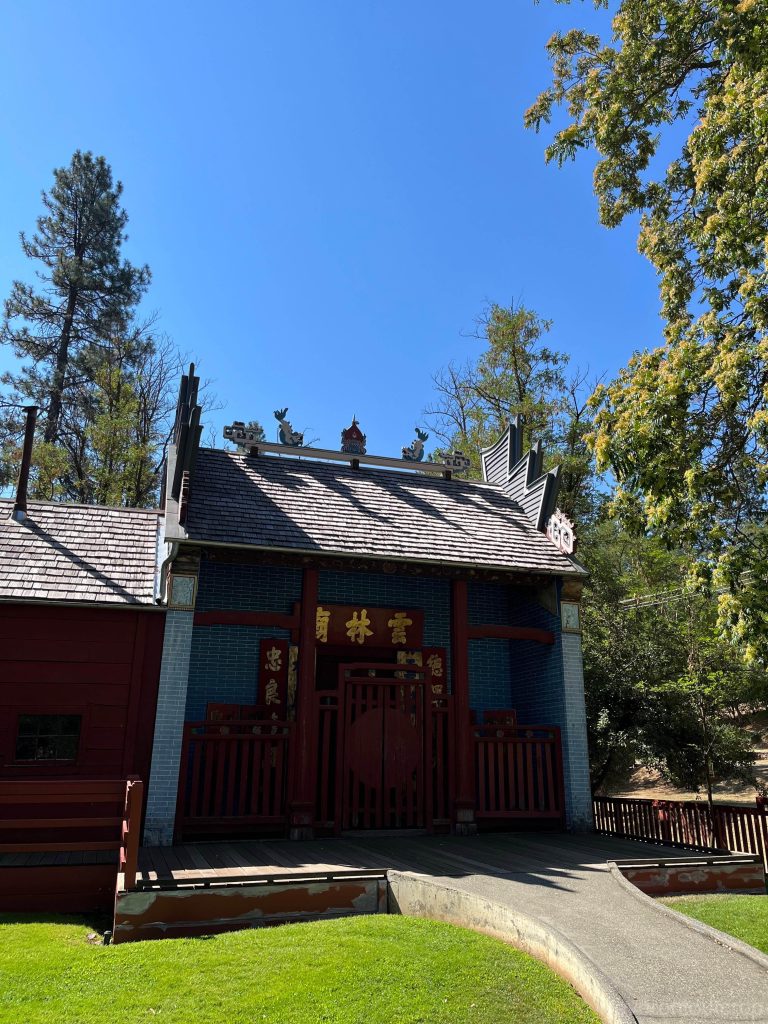

Weaverville, a gold mining town, was founded in 1850 and rapidly grew during the gold rush. Within just a few years, its population exceeded 10,000, with approximately 2,500 being Chinese. However, as the gold rush subsided and anti-Chinese legislation was enacted, many Chinese residents gradually left.




Continuing westward, we entered the Hoopa Valley, home to the Hoopa Valley Tribe. This is currently the largest Indian reservation in California, with a Native American population of approximately 3,000 people. It’s also one of the few tribes where the modern reservation overlaps with their ancestral homeland.
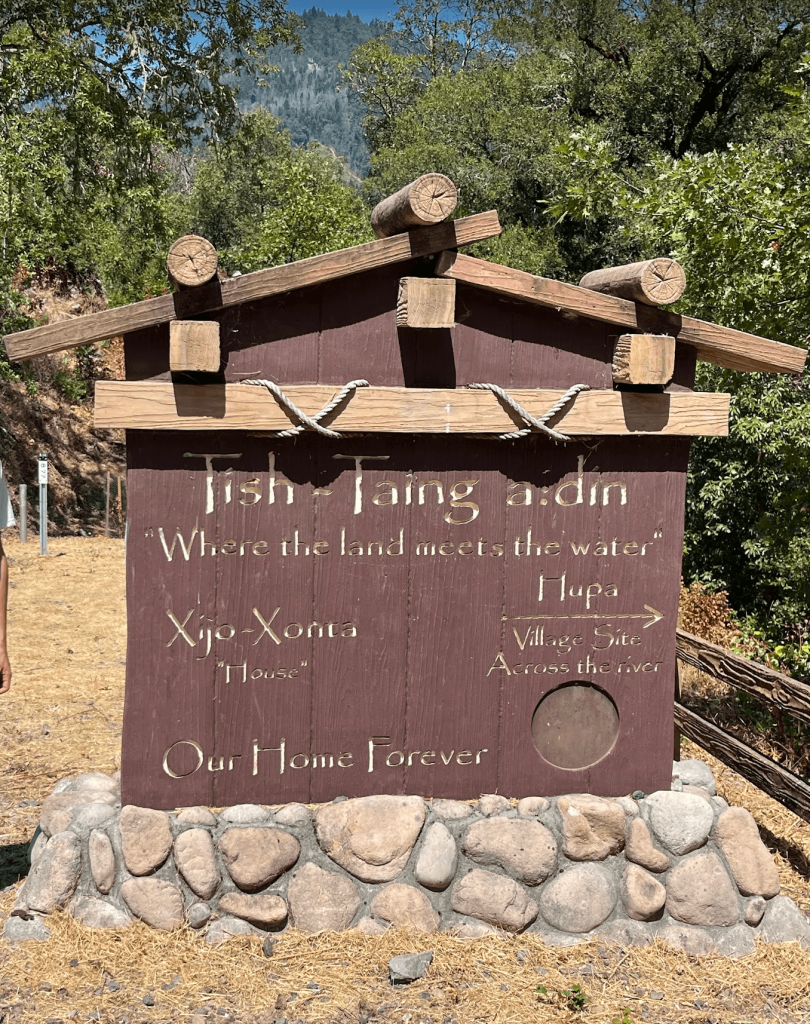
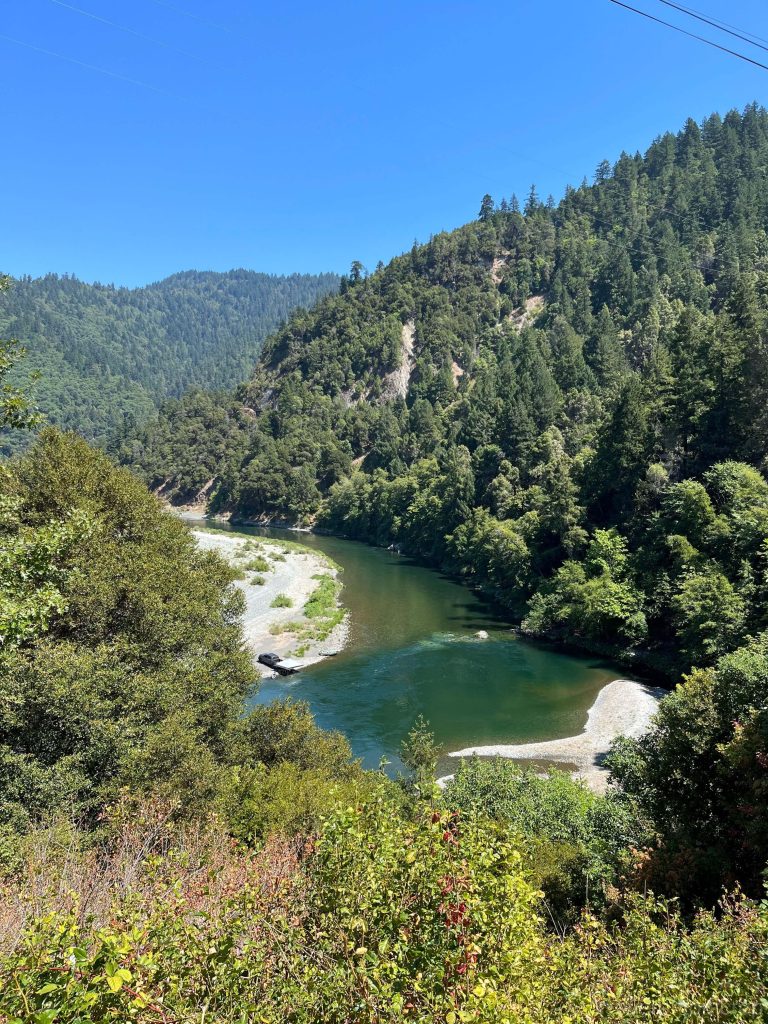
Continuing west from the Hoopa Valley, we entered Redwood National Park from the eastern side. This area belongs to the California Coast Ranges, where in the early 20th century, extensive logging of old-growth forests prompted local residents to propose the establishment of a national park starting in 1938. However, due to lobbying from logging companies, the park was not officially established until 1968. When we visited, we could see many parts of the forest as secondary growth, with large moss-covered stumps still showing clear signs of past logging activities.
The Tall Trees Grove, where the tallest tree “Hyperion” at 116 meters / 380 feet is located, lies in a canyon adjacent to Redwood Creek. Most of the redwoods are so tall that it’s challenging to see their full extent.
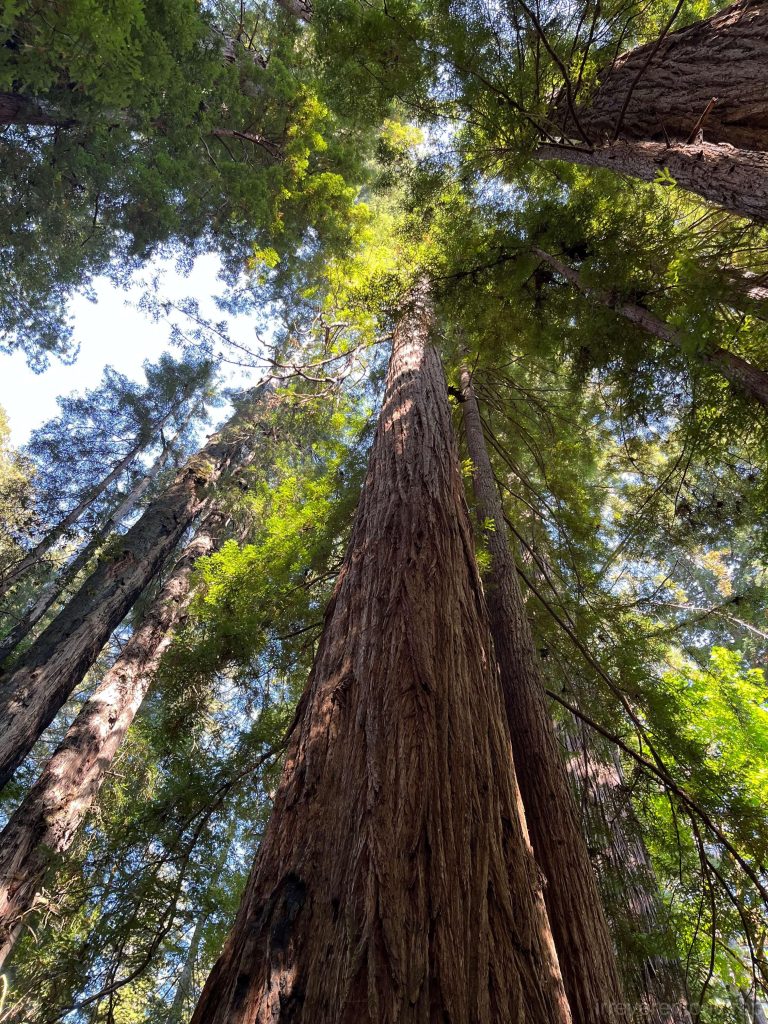
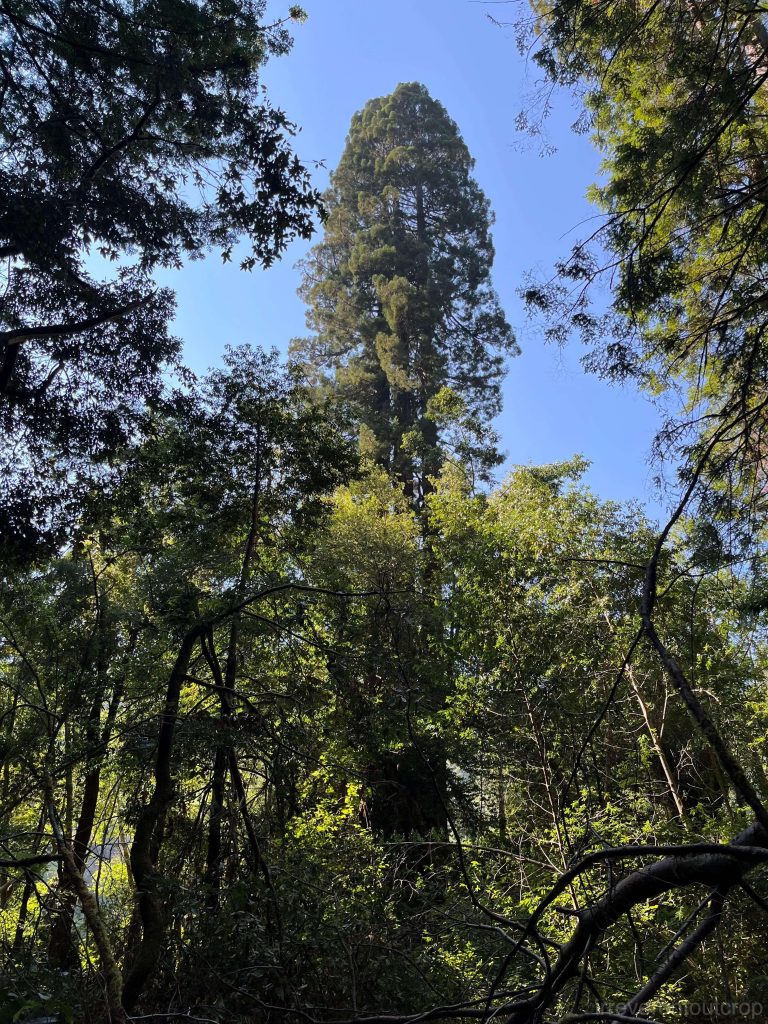
Coast redwoods have thick and tall trunks, but their roots do not go very deep into the ground. Most of them grow in groups – like friends hanging out together.
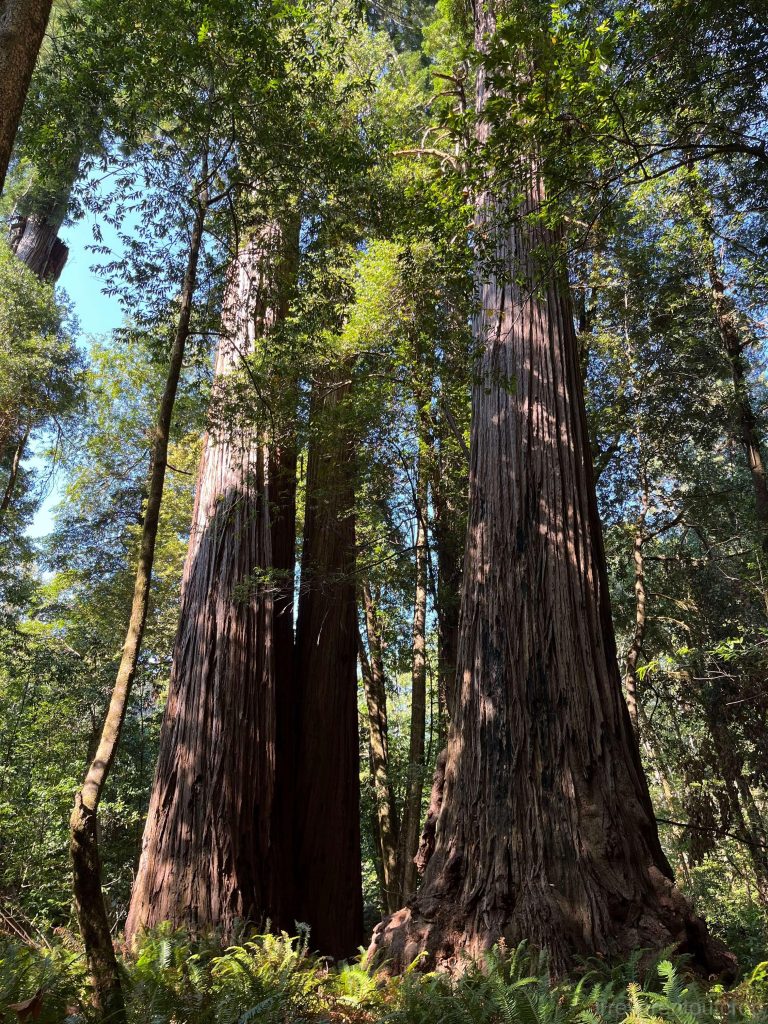
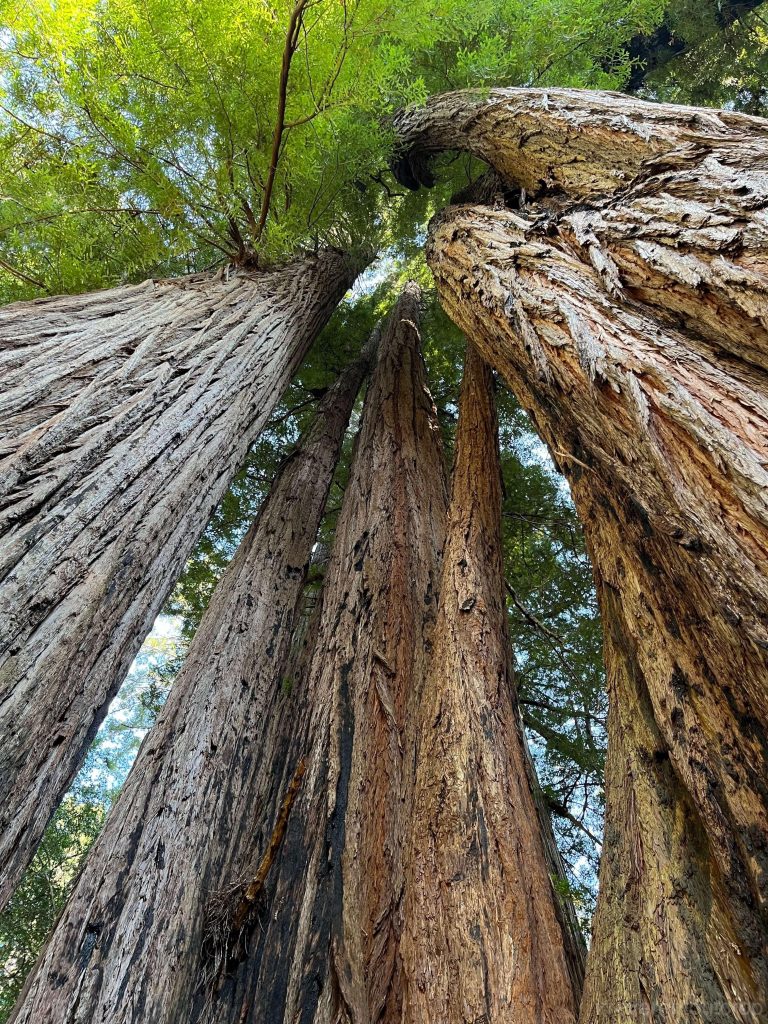
Leaving the Tall Trees Grove at the bottom of the canyon, continuing north leads to the scenic Big Tree Wayside, another area densely populated with redwoods.
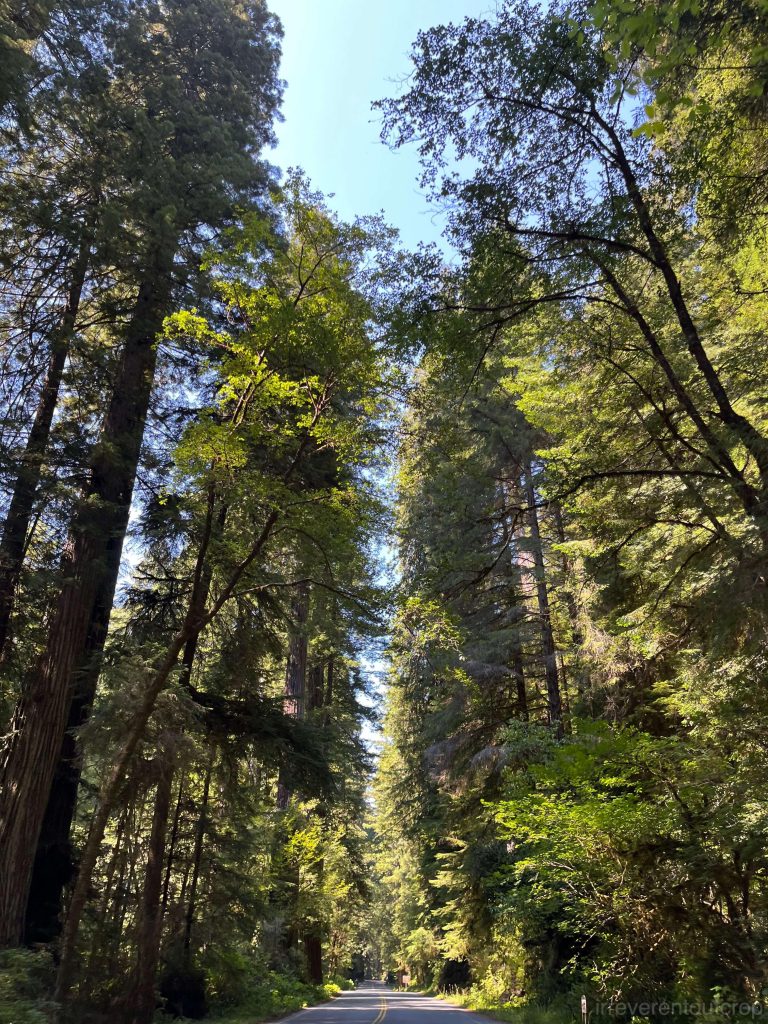
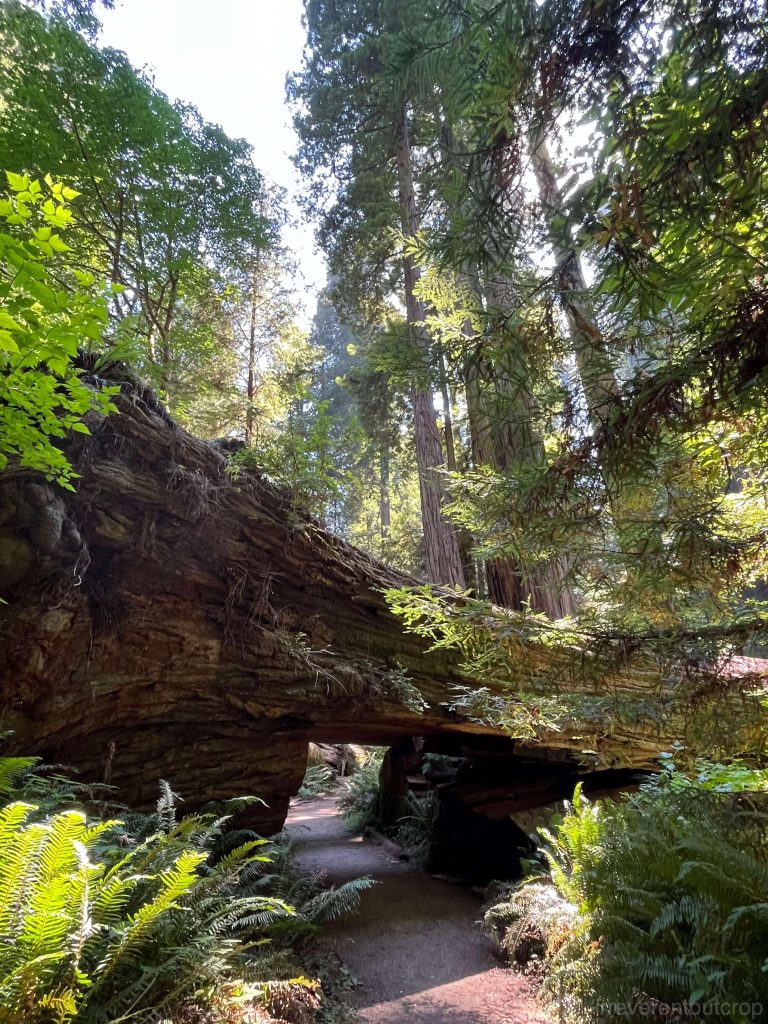
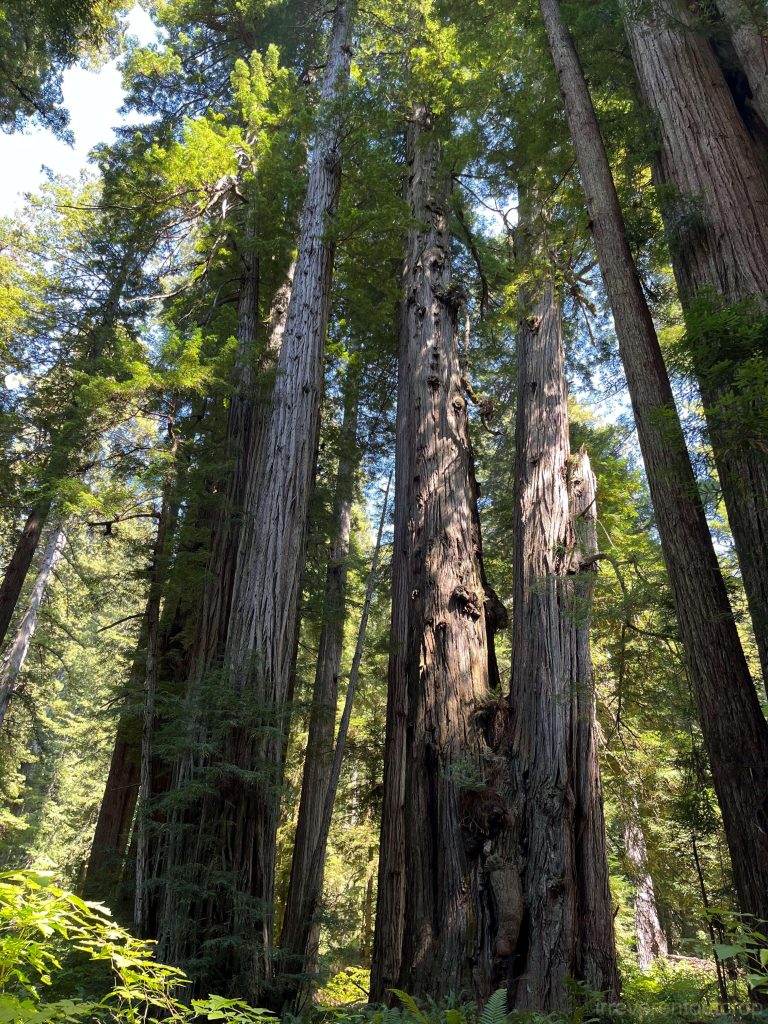
In addition, right outside the national park in the town of Eureka, the zoo built a sky walk with suspended bridges extending into the middle of the redwood trunks. It’s a great experience for getting up close to the tall trunks of the redwoods.
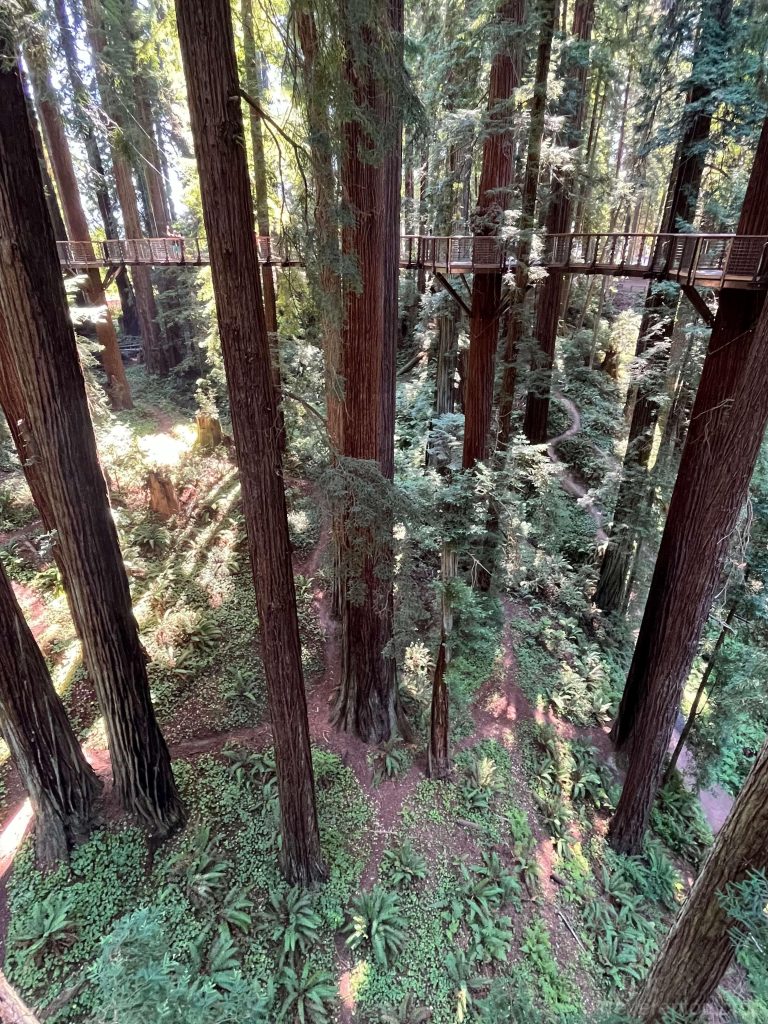
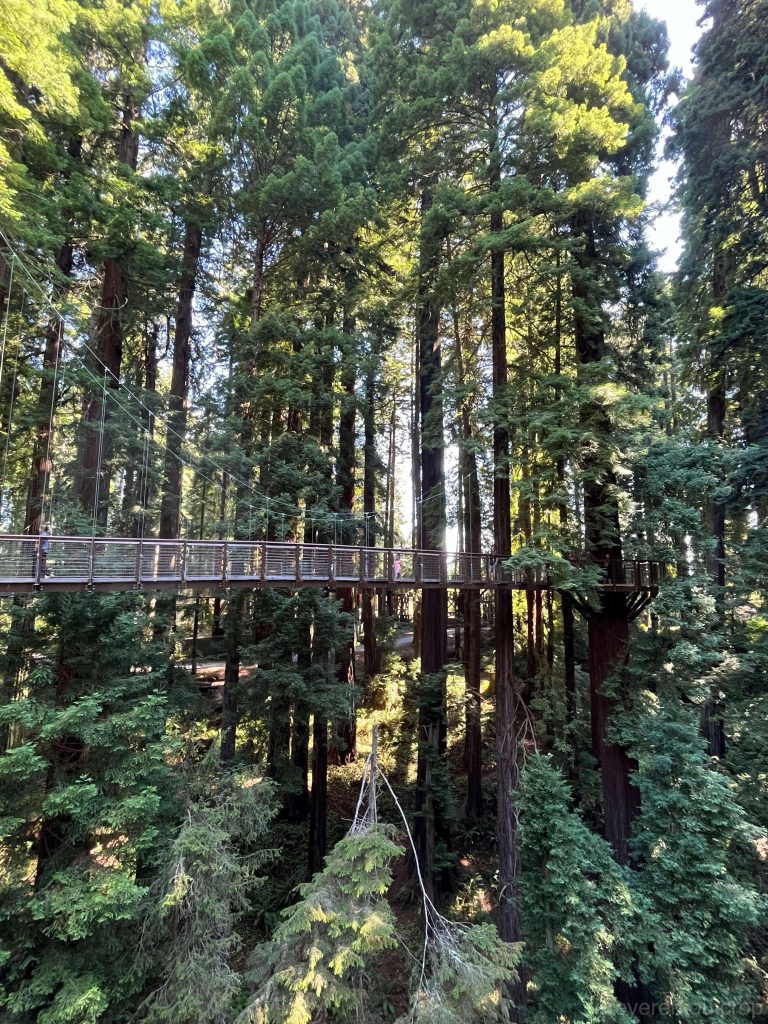
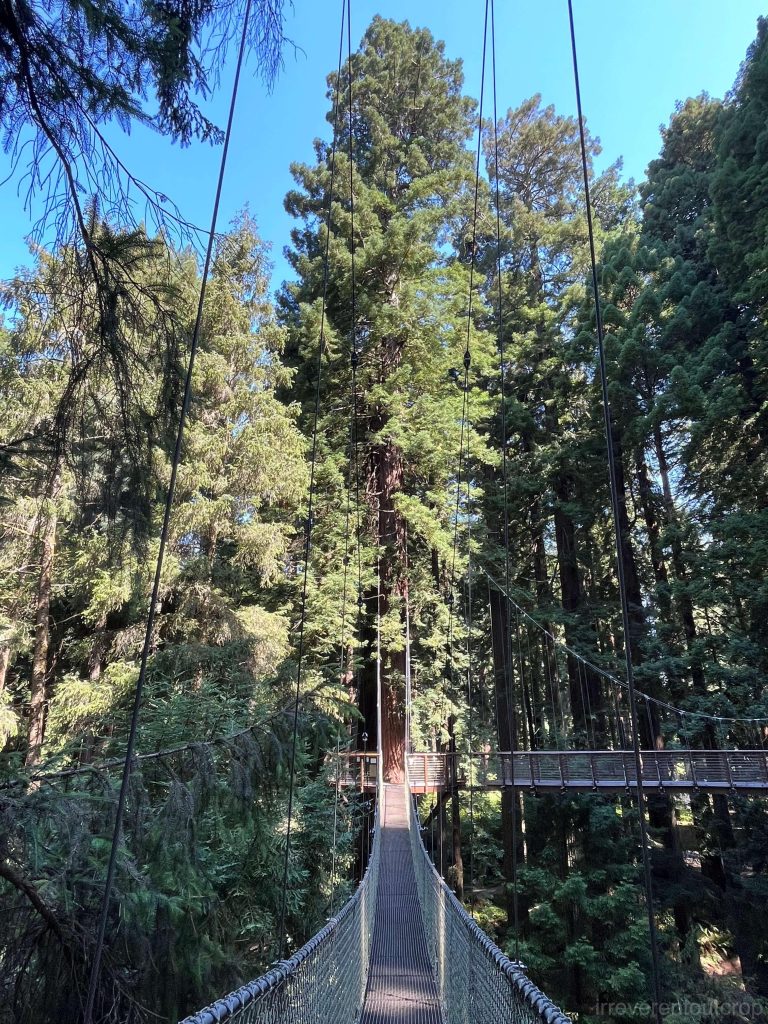
Have you ever wondered how water gets up to tall trees over 100 meters like this? Due to atmospheric pressure limitations, the maximum height for siphoning is about 10 meters, which is far from reaching the tops of these trees that are over 100 meters tall. Therefore, these giant trees need to generate powerful negative pressure – sometimes reaching a ridiculous -15 atm, and also to ensure that their xylem vessels are completely filled with liquid, free of any air bubbles, in order for water to reach the top.
Within the subfamily Sequoioideae, there are three genera. Besides Sequoia (redwoods), the other two genera each have only one endangered but incredibly remarkable relic species: Metasequoia, known as the ”dawn redwood“, survives only in the Wuling Mountains at the intersection of Hubei, Hunan, and Chongqing in China. The other is Sequoiadendron, known as the “giant sequoia”, surviving only in the southern Sierra Nevada of California. The largest tree in the world by volume (and also the largest single organism) is a giant sequoia—
The largest trees – giant sequoias
Sequoia National Park is one of the most famous national parks in the United States, about a 4-hour drive from Los Angeles and adjacent Kings Canyon National Park. (Kings Canyon, as one of the deepest canyons in North America, features incredibly unique metamorphic rock formations. My previous post- Are there picturesque metamorphic rock formations in North America? – covers more details about it.)
The largest tree by volume, named General Sherman, is estimated to be around 2,200 years old. Unlike the oldest and tallest trees we’ve seen before which are protected anonymously, General Sherman Sequoia is quite well-known and celebrated.
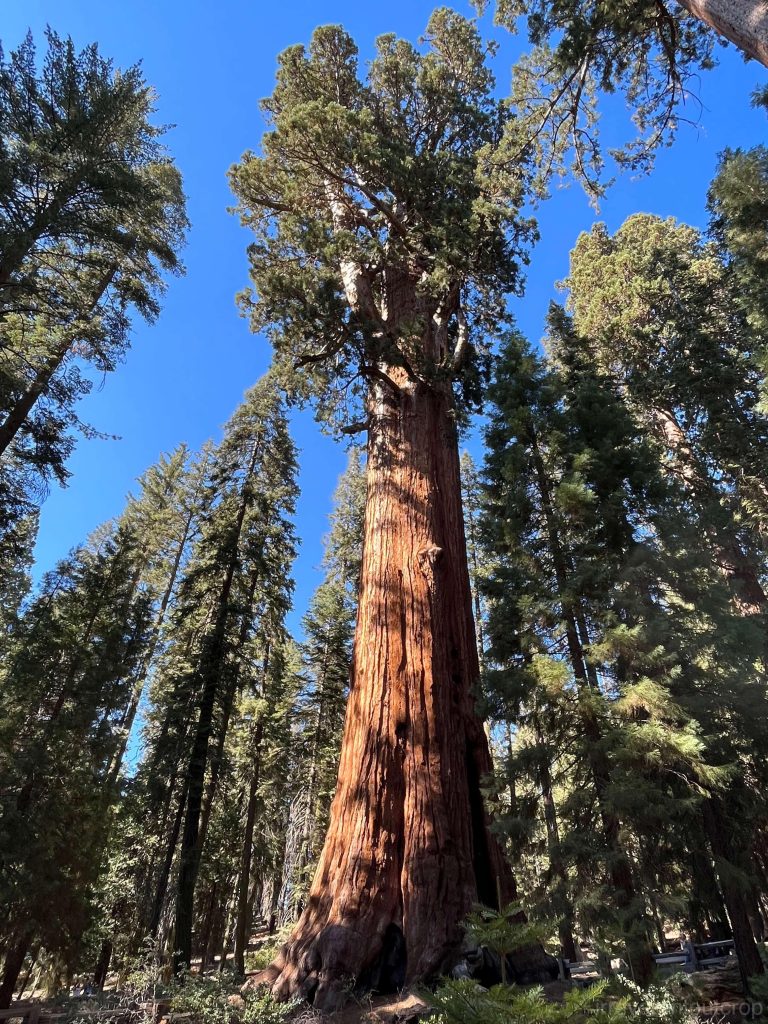
There are approximately 8,000 sequoia trees in Sequoia National Park, each with its own unique appearance. I couldn’t find convenient reference points near General Sherman when taking photos for it, so it might be a bit difficult to internalize how big these giant trees are, but I found a parking lot with several cars parked in front of the sequoias as references, providing a more intuitive sense of the height and volume of the giant sequoias.

Giant sequoias are indeed a peculiar species: extremely thick trunks with few and small leaves all crowded at the very top; the root systems can spread up to 90m / 300ft far from the center but are only 2-4m / 7-14ft deep- similar to coast redwoods with roots not penetrating deeply into the ground.
Inside the National Park, it’s possible to see fallen giant sequoias due to natural or human causes. Those that have fallen relatively recently still have clearly visible growth rings, while those that have fallen long ago have gradually become providers of nutrients for other plants in the forest, called “nursery logs”.
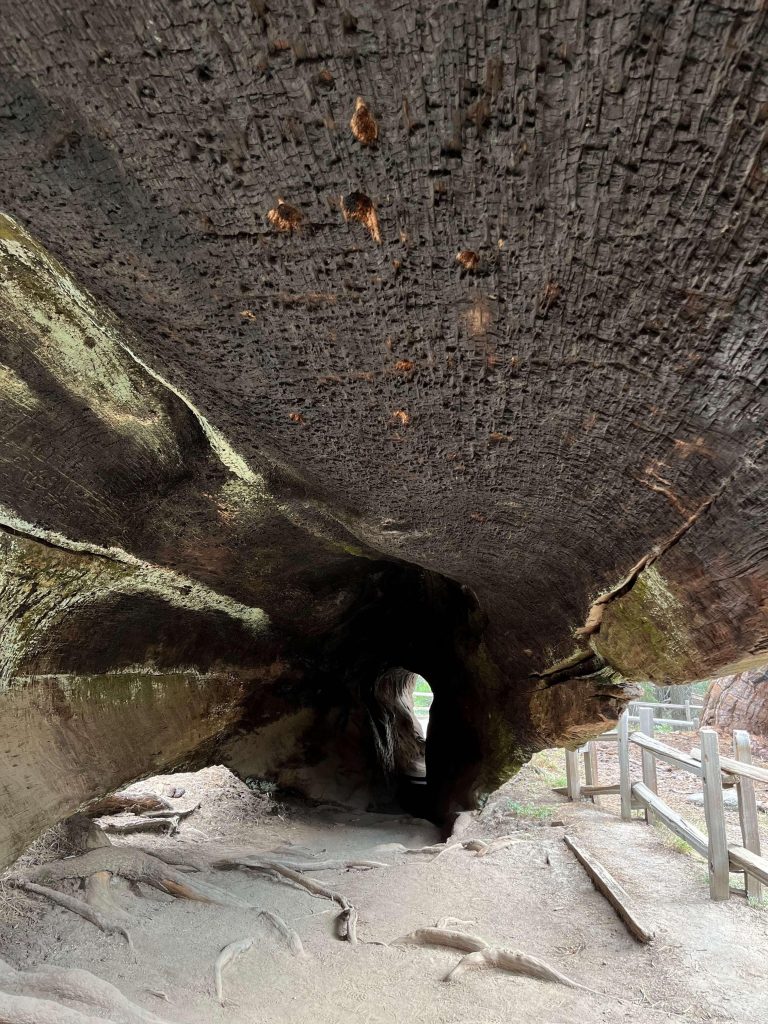
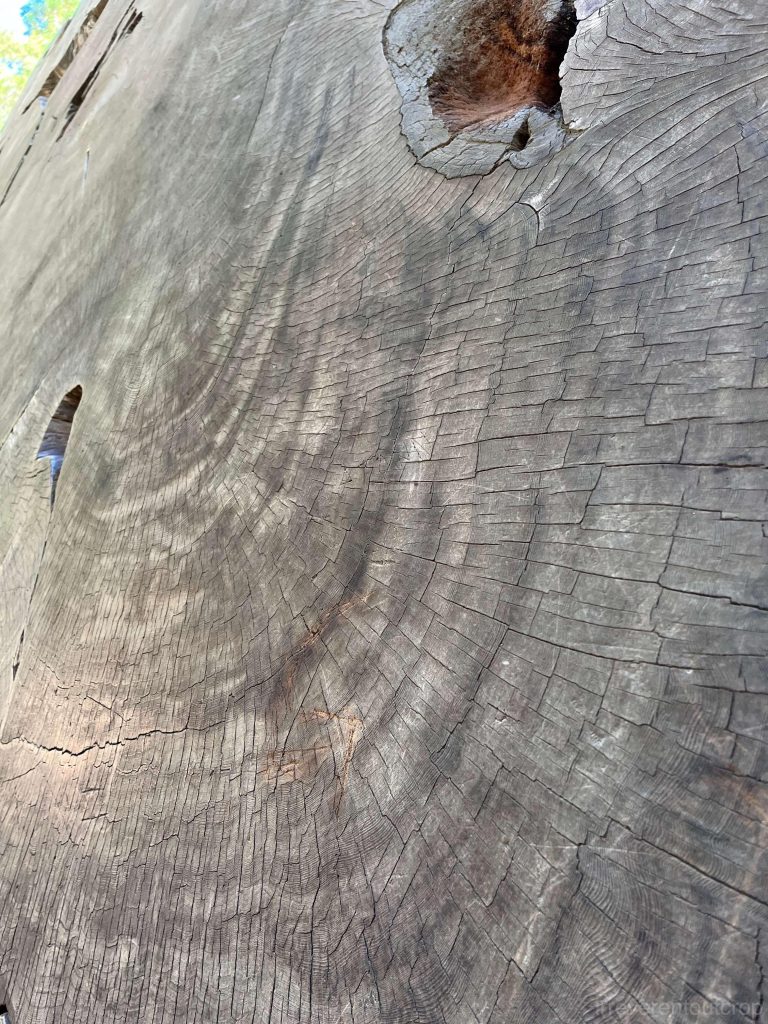
Not far from General Sherman, there is a cluster of sequoias known as the “Congress.” In the sunlight, they give a more surreal feeling compared to the individual General Sherman tree.
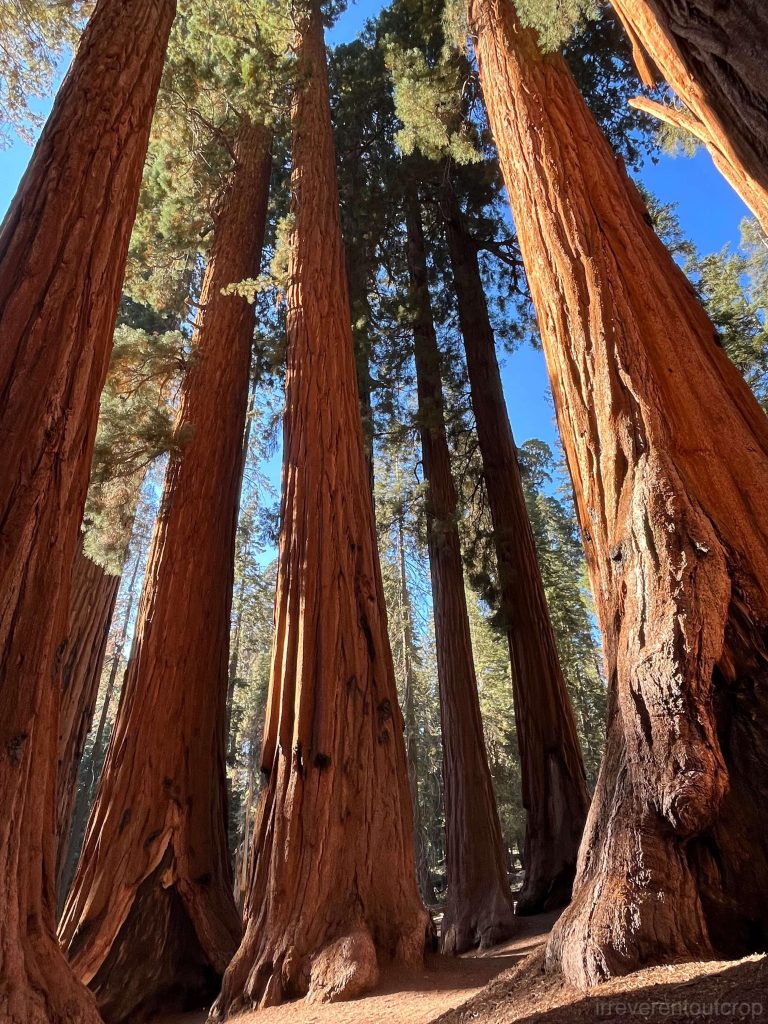
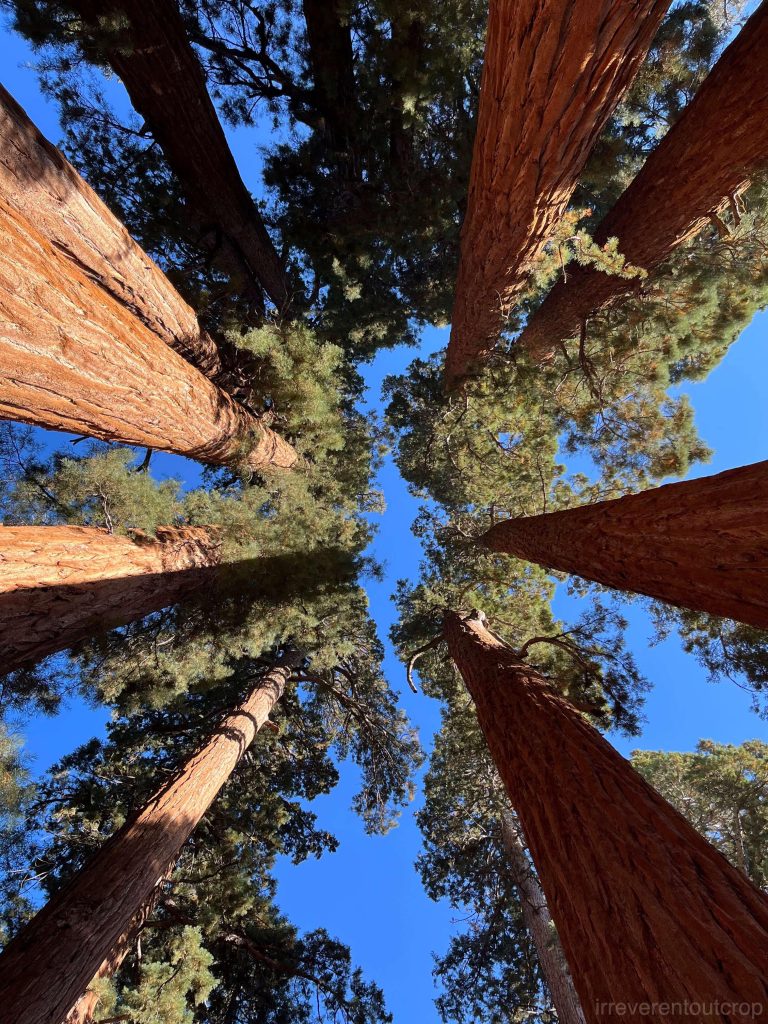
The life of giant sequoias is intertwined with fire. Their thick bark serves as a fire-resistant layer, and after surviving each wildfire- as long as it’s not fatally catastrophic to the giant sequoias- all surrounding competitors are burned to ashes and then the sequoias can have the soil’s nutrients all to themselves. Their seeds can sense wildfire- they can wait for decades and only germinate until the fire has passed, leaving ash and nutrients across the mountainside.
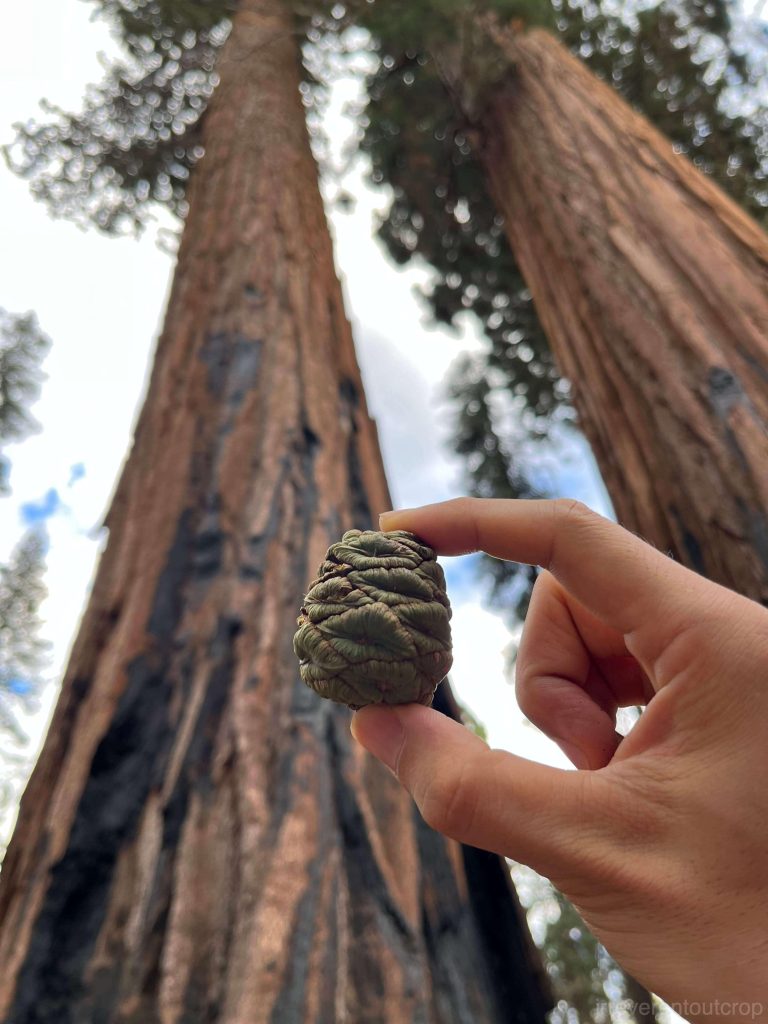
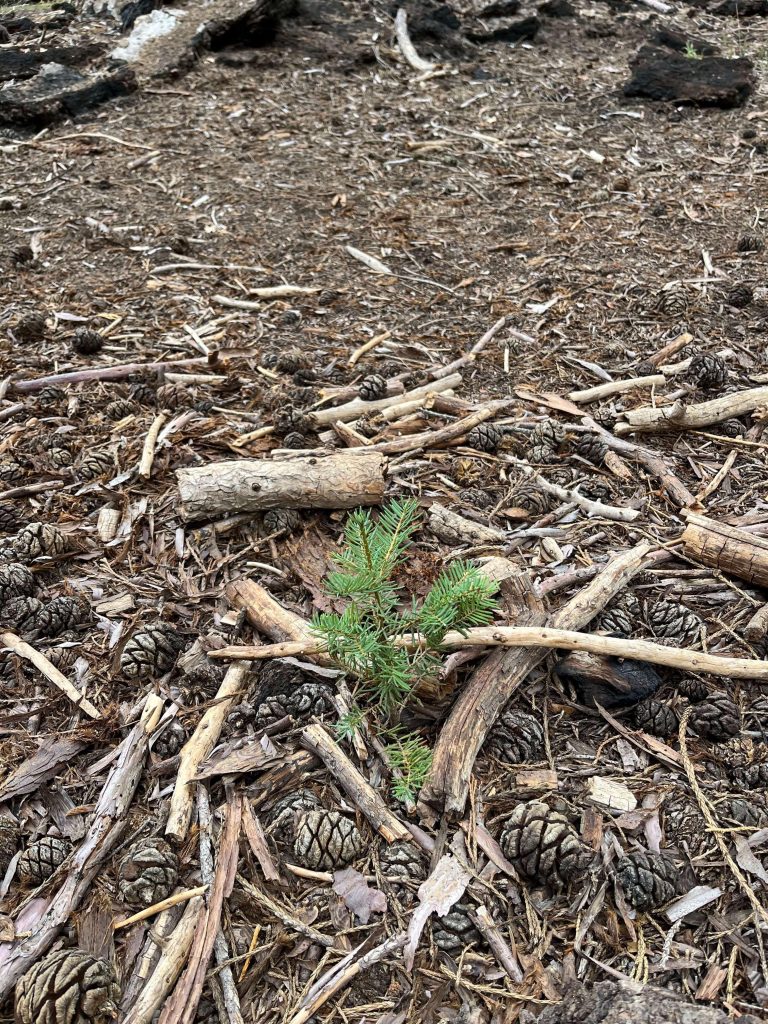
After being burned by fire, the trunks of sequoias may show varying degrees of damage, but as long as they are not ruined fully around the bark’s circumference, they can continue to grow with their top leaves functioning normally despite any extensive scars.
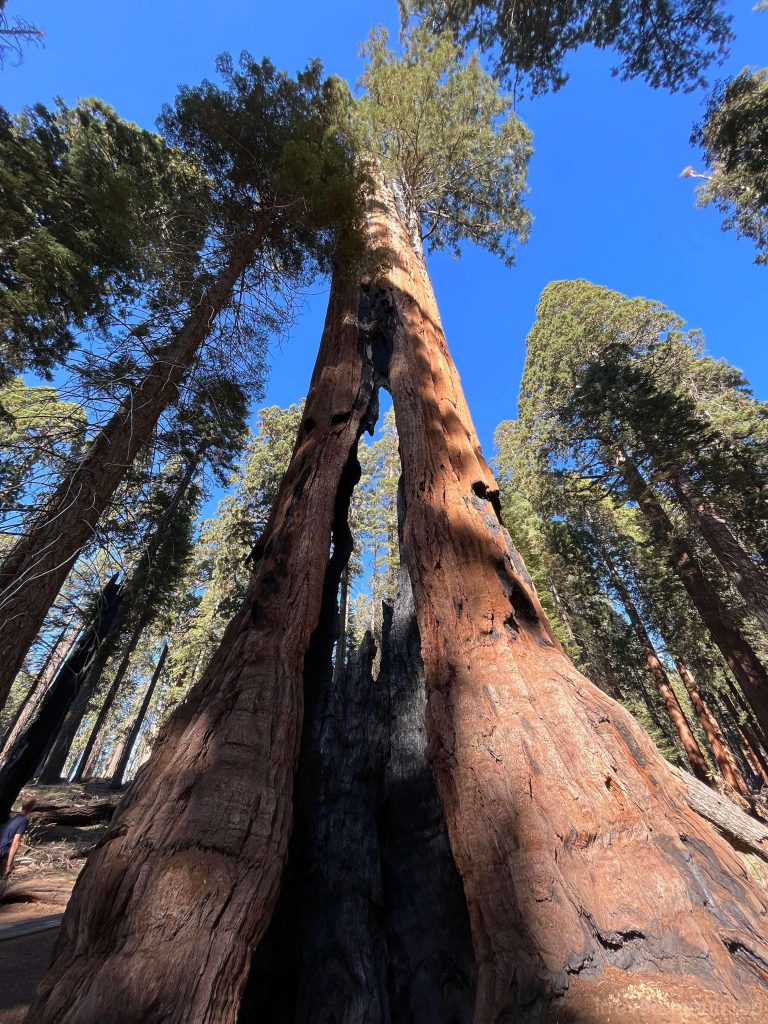
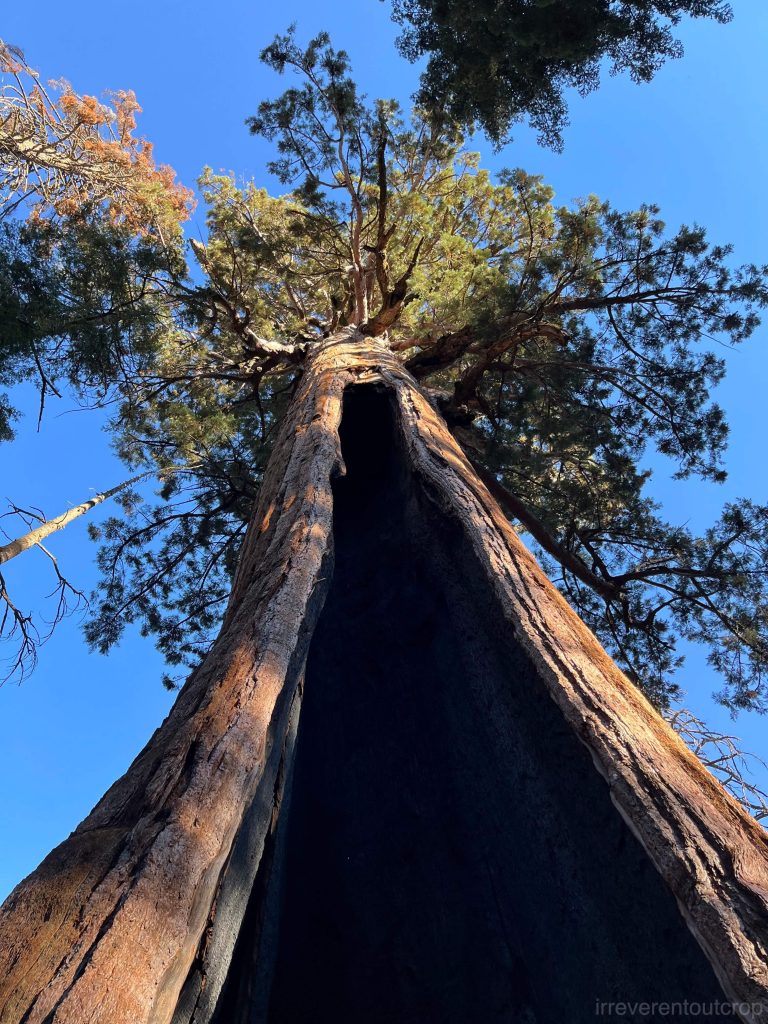
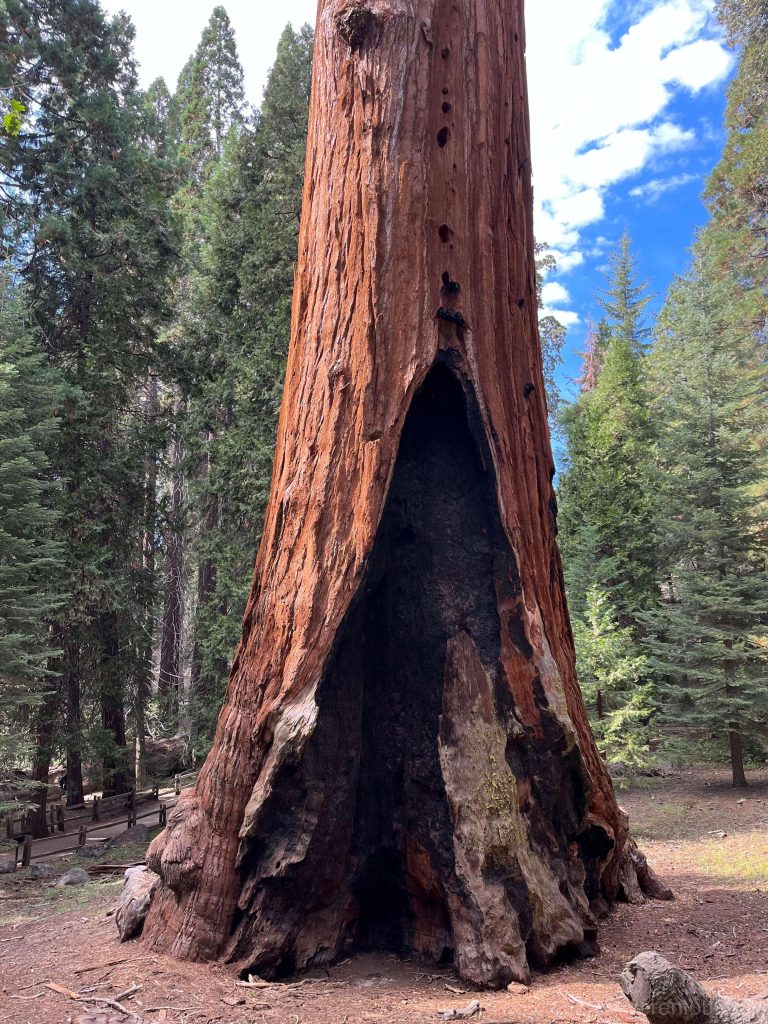
Giant sequoias have unique environmental requirements: relatively stable precipitation and temperatures, elevations above 1,500m/ 5,000 ft, and regular moderate-sized wildfires without dense vegetation. In the face of climate change, let’s hope they can continue to thrive indefinitely!

